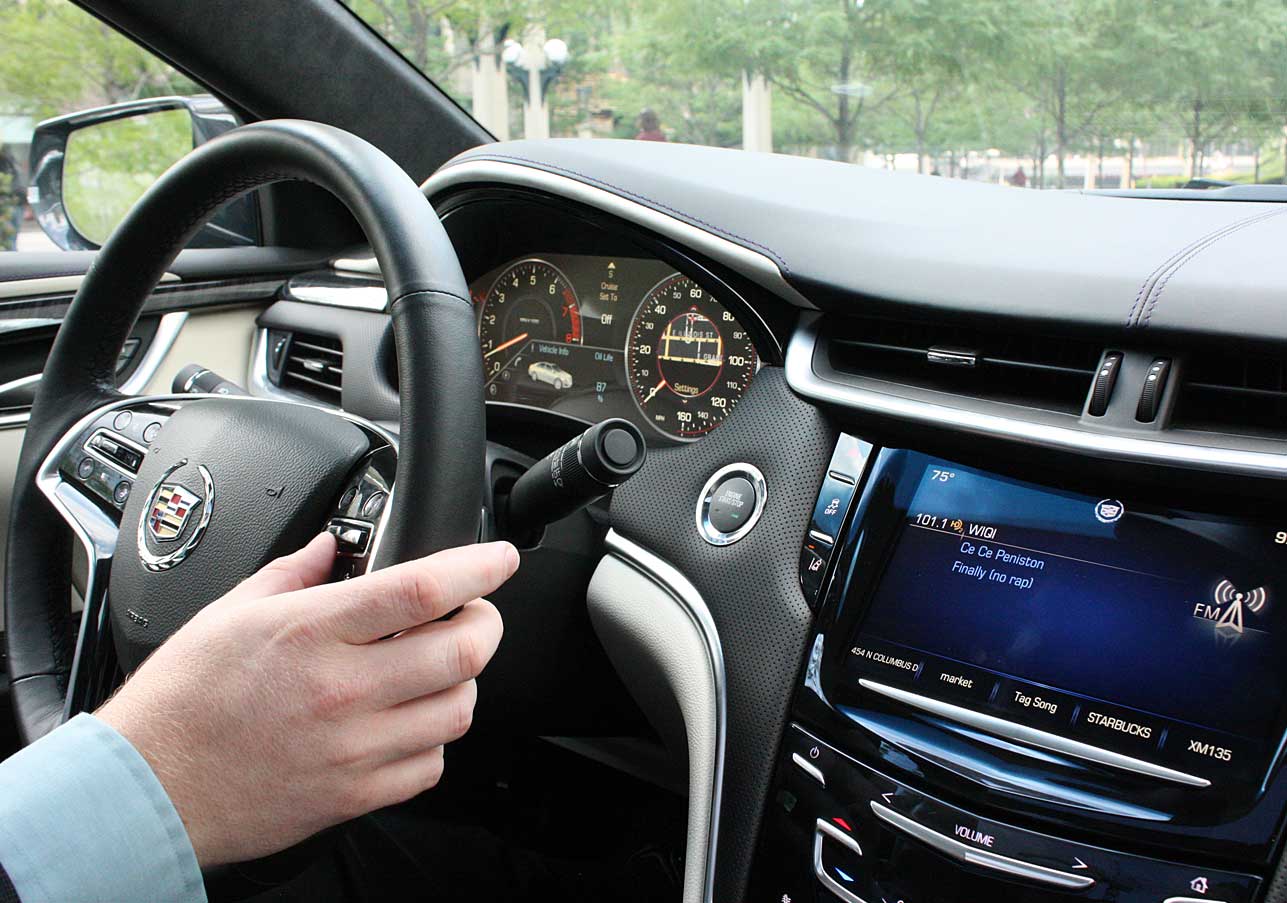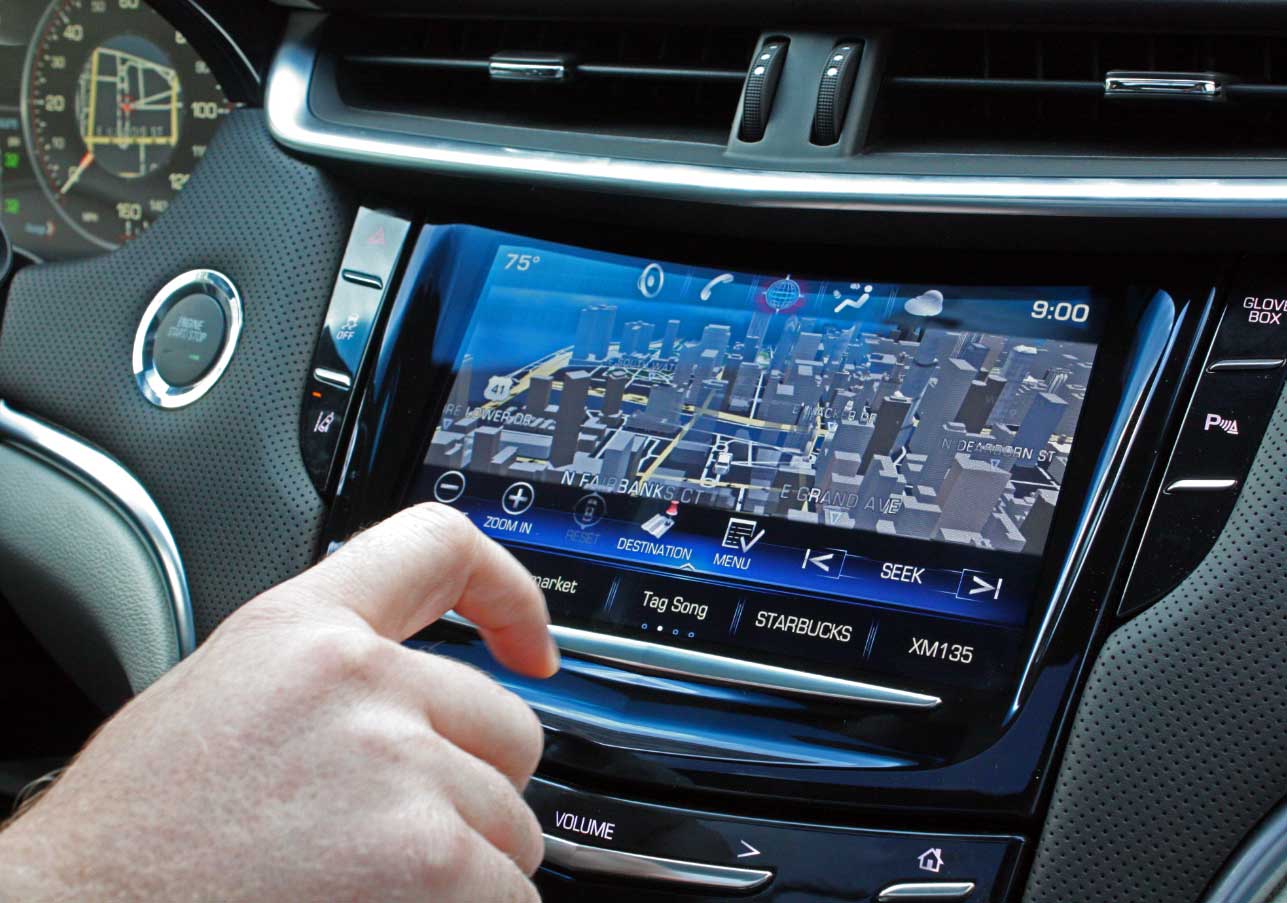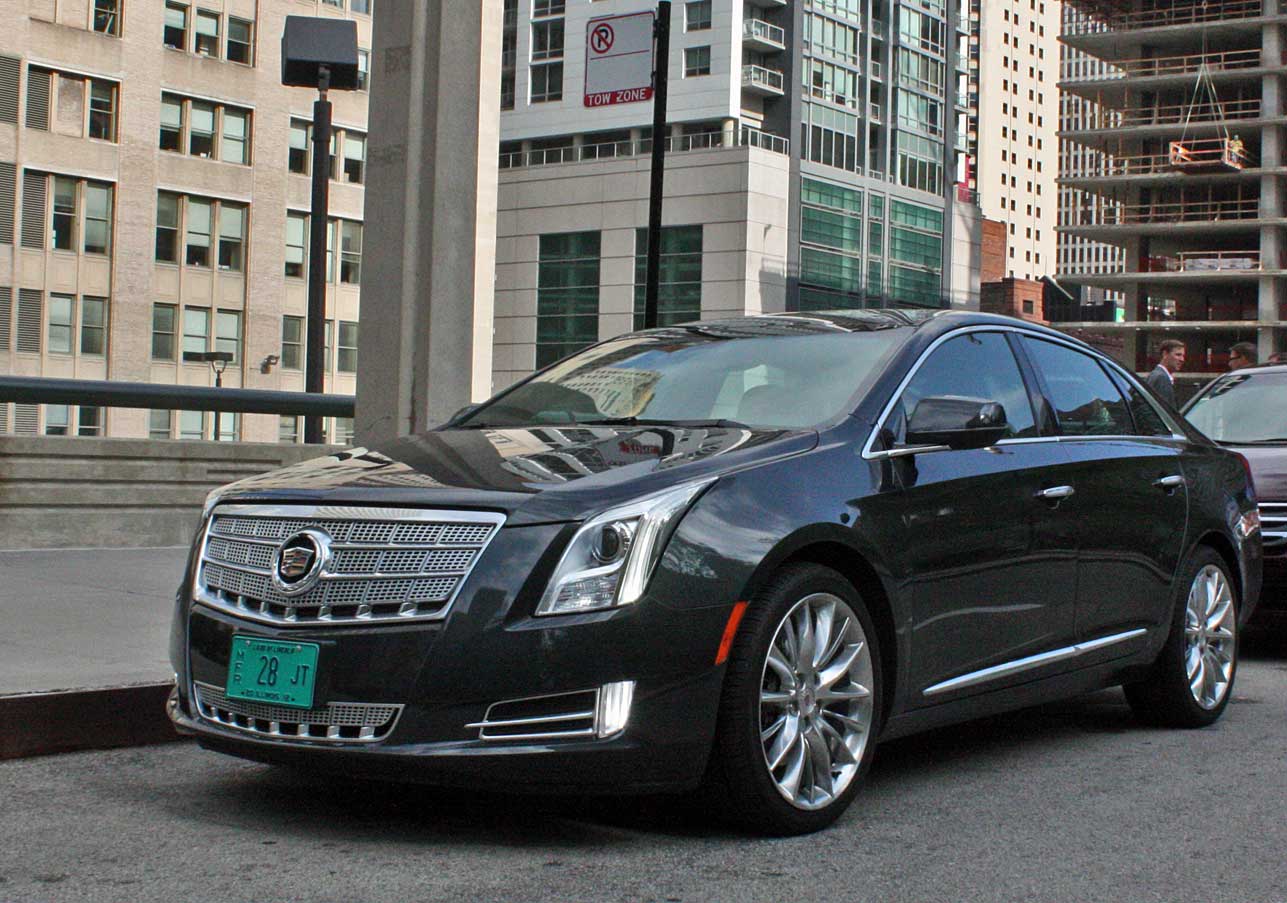Cadillac Has Impressive Car System, But Won't Offer Google
It is obvious that GM is extremely proud of its CUE entertainment system interface. If you have some time to play with the system in the brag edition of the spanking new Cadillac XTS sedan, you immediately understand why.
The XTS is Cadillac's new premium car offering that compares in size to the BMW 5-series and Mercedes E-class. What the XTS lacks in horsepower (there is just a 3.6 liter V6 with 304 hp), it makes up with the most advanced multimedia infotainment system we have seen and played with to date. The center stack multi-touch screen is 8 inches in size, it has the user experience of a modern smartphone or tablet. The software backend is based on Linux, like other mobile OSes. There is tactile feedback and support for responsive swiping - as well as a interface that lacks physical buttons. Since Cadillac was able to squeeze the 6-disc CD changer into the glove box, there is suddenly much more space and a storage compartment behind the center controls.
However, there is special feature that goes beyond the superficial looks: GM says it has built the most powerful ARM processor it could find into CUE (it’s a 3-core processor with two cores being used just for voice recognition) and uses an impressive 800x480 pixel screen. It is a highly integrated system that plays well with the (optional) 12.3-inch LCD that replaces the traditional physical gauges in front of the driver that has a much stronger focus on "design" than the dashboards we remember Cadillac has built two product generations ago. Cody Hansen, interaction designer at GM, told us that usability was the first priority, not specs. The approach of Apple product design isn't too far off from Hansen's thoughts. Tech follows user experience, not the other way around.
Of course, there are different ideas how car infotainment should look like. CUE lacks the Internet capability that is, for example, offered by BMW. While it can pull data from your phone and stream Pandora, Cadillac won't show a web browser (there is however, a hidden Webkit-based browser built in). Showing Google's front page would not solve a problem, Hansen said. Showing a search page would tell the driver and passengers to figure out a certain task themselves. Instead CUE was designed in a way so that applications and built-in features deliver on the consumer's desire to be entertained and stay connected with others while in the car. He did not deny, however, that there will be more online features in future versions. The interesting part on this note is that CUE could be flashed and updated simply via the SD card slot that is available below the armrest between the front seats. Hansen neither confirmed nor denied that Cadillac will be offering such a feature.
Cadillac promised us an XTS for an extended time to test the features in detail. The first impression is that, despite the clean layout, the overall feature set can be overwhelming and XTS buyers more than likely will have to spend some time with the system to be able to take advantage of it. However, there was also the awkward feeling that kids who are growing up with touch screen devices will expect CUE-like entertainment systems in the cars they will drive in a few years down the road.
The XTS retails from about $44,000 to $61,000.
Get Tom's Hardware's best news and in-depth reviews, straight to your inbox.

Douglas Perry was a freelance writer for Tom's Hardware covering semiconductors, storage technology, quantum computing, and processor power delivery. He has authored several books and is currently an editor for The Oregonian/OregonLive.
-
danwat1234 3.6L V6 with 306HP? Please, that's so 1990. 125HP/Liter has been achieved by Subaru, Ford and others. Why not make it a 2.5L Turbo and get the same power? They've figured out how to almost completely eliminate turbo lag too.Reply -
velocityg4 I just hope this isn't integrated with other systems in the car. I hate how many modern cars have the stereo integrated with buttons and information systems in the car. Then if you ever upgrade your stereo you end up losing a lot of functionality.Reply
These systems are even worse since they will be obsolete and not interface with any of your gadgets after a couple years and lose functionality. At least in older car stereos cassettes and CD's lasted a long time as a major consumer item and AM/FM is still all over the place. Even then you could always just replace the stereo not the case with many other cars. At least my 09 Mustang doesn't have any of that BS. -
huron velocityg4I just hope this isn't integrated with other systems in the car. I hate how many modern cars have the stereo integrated with buttons and information systems in the car. Then if you ever upgrade your stereo you end up losing a lot of functionality.These systems are even worse since they will be obsolete and not interface with any of your gadgets after a couple years and lose functionality. At least in older car stereos cassettes and CD's lasted a long time as a major consumer item and AM/FM is still all over the place. Even then you could always just replace the stereo not the case with many other cars. At least my 09 Mustang doesn't have any of that BS.Reply
I'll agree with this. My car has the mpg, oil life, etc all through the stereo. I love having steering wheel controls, but if I upgrade, I'd lose some serious functionality. -
"Showing Google's front page would not solve a problem, Hansen said."Reply
^ Right, because GM can think of every possible reason anyone would ever want to use google search. GM is omnipotent. Sweet -
bnjm nice to know GM can cover any and every good reason one would want to use google in there car.Reply -
jhansonxi Seems to be Linux-based:Reply
http://www.linuxfordevices.com/c/a/News/Cadillac-CUE/
Could load up VDrift so you could play while stuck in a traffic jam when you can't drive for real. -
danwat1234 steelyphillacks in horsepower? really? thats plenty for the average driver.Yea but a turbo 2.5L engine will get better fuel economy than a 3.6L non turbo if they do it right. As well as less weight.Reply -
alextheblue velocityg4These systems are even worse since they will be obsolete and not interface with any of your gadgets after a couple years and lose functionality.I don't buy that. Just as there are tape adapters for connecting a portable CD player to a tape deck, if there's a market, someone will sell an "adapter" of some variety. Not to mention that bluetooth seems to have pretty good staying power in the market, and most cars use that now to communicate wirelessly with various devices. I suspect Bluetooth keeps backwards compatibility in mind any time they release a new version. huronI'll agree with this. My car has the mpg, oil life, etc all through the stereo. I love having steering wheel controls, but if I upgrade, I'd lose some serious functionality.The aftermarket catches up. There are adapters for many vehicles to retain steering wheel controls with aftermarket radios. Also if it integrates vehicle programmability (reset oil life monitor, etc), some people relocate the factory unit (trunk?) and install an aftermarket one up front.Reply
Besides, a lot of factory radios are pretty good. You might need to upgrade some of the other hardware, but the radio itself seems to be OK these days in most vehicles. Audiophiles will either buy upgraded stereo options from the factory, or will find a way to do it themselves - see above. -
alextheblue danwat1234Yea but a turbo 2.5L engine will get better fuel economy than a 3.6L non turbo if they do it right. As well as less weight.Well, this 3.6L is actually pretty light, and gets pretty good mileage for the size of the vehicle. If you take your 4 banger, add in the turbo, extra tubing, and intercooler, and a 2.5L turbo wouldn't be *that* much lighter. Even though I like them, smaller turbo engines aren't automatically better in every situation, either. GM has turbo engines in their lineup, including the powerful 2.0L turbo in the GS Turbo - lots of HP and torque (I think 270/295 stock), no turbo lag whatsoever. A slightly higher displacement (like the 2.5L you stated) would have made more power than even this engine. But the GS Turbo is a smaller lighter vehicle.Reply
Yet their engineers chose this direct injected naturally aspirated V6. Maybe these engineers know what they're doing? Maybe there's more to a car than just power specs, or for that matter more to an engine than just power or fuel economy alone? The DI 3.6L has a proven track record, for starters. It's a solid engine, and it's a fairly big car. Maybe in their testing the 3.6L had better characteristics or durability for the kind of workload/RPMs it would be under. Maybe it was quieter, and smoother. I think anyone in the market for a luxury XTS would want a vehicle with a nice, even throttle response and a smooth engine. Noise, vibration, harshness. NVH - very important to your typical luxury car driver.
If you want a mean little turbocharged Caddy, keep an eye out for the upcoming little brother ATS. Built on Alpha platform, with available turbo 2.0L. I should also note that the DI 3.6L in the Camaro now has improved heads and produces 323HP stock. After a couple of years they may deem it a suitable upgrade for the XTS, if it doesn't hurt NVH characteristics.


